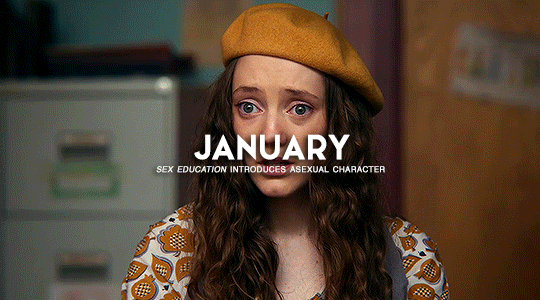Photo
space gfs kieutou
(collab with my friend @soapya!! she did the beautiful lineart and i did the colors)
6K notes
·
View notes
Photo

Mi Padre vs My grandparents 💕 (Chinese Mexican)
132 notes
·
View notes
Text
New Raya and the Last Dragon trailer? New cultural influences breakdown! Please note that this breakdown comes from a SEA who comes specifically from a Filipino background. Most, if not all, of the below information will be from that lens.
Seaport/night market

The scene above looks to be heavily influenced by many on the sea towns you see in SEA. Most notably, Vietnam. However, there are many towns like these all over the SEA region. The lights and lanterns give it a night market feel, which is a concept that is seen throughout Asia in general.

We see Raya’s hat which seems to be influenced by a Philippine salakot, but it is possible that it has influences from other SEA cultures. The architecture is akin to the weather that you typically see in the region which is more humid than East Asia, and more rooted in the sea. More things here are made from bamboo and there are nipa roofs.

Ignoring the blurry con baby, let’s take a look at the clothing. In this scene we see colorful golden zig zag patterns which you typically see more to the southern part of SEA, but there are similar patterns throughout. Here, the skirts and clothing seems to have much influence from Malaysia, Indonesia, and the southern islands of the Philippines.

Oh what a scene! This is such a great view of what a typical SEA rural fishing town might look like: on the water, with houses and stores even on the water. There are narrow boats and coracles with baskets of food of all kinds of fruits and vegetables that people row around. You can see the nipa roofs really well from here, and might I add–a great looking bamboo bridge.

I have no idea how I caught this but just wanted to point out that these fruits that Raya cuts up look to be either lychees or rambutan which are found in SEA as well.
Taking a moment to paste in this still from Entertainment in the same scene to note the fish in the basket to the left and the green star-shaped lantern that really gave me Philippine parol vibes. All the lanterns in the sea town look to either be made from paper or from capiz shells and dyed different colors.
Lands and architecture

The grand looking building on top of this island looks to be influenced by architecture from Brunei. Specifically, the dome shapes. A better shot below:


The building in the middle of this island is obviously an exaggerated, fantastical version of what it was influenced by which looks to be a mix between Cambodian and Thai. All that gold…very typical of many countries in SEA. I’d also love to point out the rice terraces!!! Love them! While rice is a staple throughout Asia, it’s so nice to see it represented here. It kind of reminds me of a miniature version of the Banaue rice terraces in the northern mountain region of the Philippines.
It’s also nice to see that some of the lands seem to be influenced by the tropical, humid climates of much of SEA. The palms and the thick forests are typical in much of the region.

Oh the rice fields. Raya and Sisu are standing here on one. We can see the mountainous background, reminiscent of the northern Philippines, the rain which just looks so typical that I’m kind of impressed by this particular setting.
Other cultural touches

At first glance, you might think this looks like a lotus flower, but I think it’s actually either a plumeria or a jasmine flower. Both are abundant in the region, and just imagining the fragrant smell of a jasmine flower here fits more as a story set in SEA and not in East Asia.

This is not an opinion post, so I won’t state my opinions on the final (non-statue) design of the dragon, but I can analyze what it’s most likely based after.
Unlike dragons in East Asia, SEA are often depicted with a long horn at the front. This is most prominent in Thai depictions. In many countries of the region, this dragon is called a naga. While a naga is also in South Asian mythology, they are a bit different here. Naga are so important within SEA cultures that we have multiple places (and a river) named after them all over SEA and particularly a few times in the Philippines.
What I can tell you is mostly the Philippine version, but a naga is a serpentine creature that lives deep in the ocean, and are often associated with water. Sometimes they are depicted as having the upper half of a woman. A more famous naga (or a naga-influenced dragon), is Bakunawa–the great sea dragon that devours the moon and causes eclipses. It is said that Bakunawa is a naga, and sometimes the names are interchanged.
In the southern islands of the Philippines, depictions of naga are seen carved throughout buildings, particularly on roofs. A typical dance movement where you keep your hands curved and your fingers bent toward yourself is called “naga hands” and is supposed to be reminiscent of a naga’s graceful claws.

Highlighting here how cool it is to see that this is indeed a water dragon which is consistent with a naga. It’s also nice to note that it shapeshifts with water. Naga are supposed to have influence over earthquakes, the sea, rainfall, storms, and the like. They can also sometimes shapeshift into humans.

Remember what I said about naga influencing rainfall?
And then we have the shape-shifting into a human!

Raya’s sword is a wavy blade called a kris blade. Found throughout many countries in SEA, the one I am most familiar with is the Philippine one. From what I know of it, they are blades that are wavy because when they pierce someone, it is more painful when they are withdrawn.
Her fighting style is also influenced by Philippine martial arts. Notably arnis and escrima. They are fighting techniques that rely on shifting your opponent’s weight around, using their force against them. They also have a lot of quick footwork and practitioners are usually skilled with weapons such as swords and kali sticks. (Fun fact: I’ve heard some people say that the footwork from arnis may have influenced the quick steps of the national dance of the Philippines, tinikling.) To see more on that, check out the first teaser trailer where she uses kali sticks, and my first analysis. That analysis also goes into the clothing influences.
THE GOLD. Gold is so, so important in SEA. This was a big glaring problem after seeing the first teaser trailer…there was not enough gold! Here, we can see that there is in fact, gold. The architecture here looks like a mix of different things, but I’m seeing perhaps…Thai?

And here we have Tuk Tuk who is probably named after a tuk-tuk–a motorbike with a side carriage like a rickshaw–seen in SEA. “Tuk-tuk” is what this rickshaw is called in Thailand. In the Philippines it’s simply known as a tricycle. They are vehicles for hire, which is kind of funny since Raya rides Tuk Tuk.
Also of note, Tuk Tuk the animal is a giant pangolin. While I don’t know of any this size, they are found in SEA as well as other parts of the world.
Tuk Tuk looks like he’s eating a pink pomelo (grapefruit)? Not entirely sure, but that would fit the mold if he was in the Philippines. For some reason, grapefruit seems to be a popular fruit item.
That’s all I got! If you come from another SEA culture or noticed any other things (or things that I got wrong), feel free to add to this post!
2K notes
·
View notes
Text
The Crown writers after the Meghan/Harry interview with Oprah
32K notes
·
View notes
Text
If English mugs other languages in dark alleyways, then Tagalog straight up threw Spanish into a blender…

63 notes
·
View notes
Text
there’s just something about women with knives/blades that I just




I mean


look at them




they can fuck me up



feel free to suggest more I’m open to more badass women that could kill me in 2 seconds
246 notes
·
View notes
Text
How do you tell the difference between a priest and a Tolkien fan?
1K notes
·
View notes
Text
someone made something like this but I couldn’t find it so enjoy this rendition
4K notes
·
View notes
Text
10 Ways to Appreciate Romani Culture
1. Attend a Festival

Festivals are a great way to partake in a culture different from your own. Romani people have numerous festivals throughout the year, many of which are open events and welcoming to non-Roma participants. Festivals, such as the Appleby Horse Fair, Khamoro, and the California Herdeljezi Festival, are all great examples of open cultural events that allow you to actively participate in aspects of Romani culture.
For a list of some more Romani festivals, click here!
2. Consume Romani Media
Romani media is completely underrated. There are a plethora of great producers, actors, musicians, and radio personalities who are ethnic Roma. Consuming media is one way we can actively engage with and learn about another culture without being disrespectful.
For a list of Romani media, click here!
3. Read a Book

Romani authors are plentiful, and with a larger-than-ever presence of Roma on the internet, Romani books and poetry are becoming much more accessible. There are numerous books that have been translated from the Romani language in English, Russian, Hungarian, French, Spanish, and various other languages. A quick internet search can now produce comprehensive lists of ethnic Romani authors.
4. Buy Real “Gypsy” Fashion
Retailers, such as Romani Design, and the Tzigania Store, have made Romani-inspired clothing and jewelry accessible to and designed for both Roma and non-Roma. If you like traditional Romani motifs, purchasing clothing from a store like Romani Design not only supports ethnic Romani designers, but also allows you to consume Romani fashion in a way that is not appropriative.
If you’d like to learn more about appropriation versus appreciation, click here!
5. Learn a Language
While Roma have varying opinions on non-Roma learning our language, generally speaking, learning a foreign language is one way to appreciate a different culture.There’s also the added benefit that knowing more than one language has been proven to positively impact brain function. There are several reputable books and websites that can assist in Romani language learning endeavors.
6. Support Romani Art
Support Romani arts by purchasing Romani art, or going to galleries where Romani art is featured. As Roma, our traditional artwork is often overlooked and comes second to non-Romani depictions of us. Supporting Romani arts and efforts to preserve Romani arts has a profound impact on our communities, and allows you to appreciate Romani culture.
To learn more about Romani arts initiatives, click here!
7. Donate to Romani Causes

One way to appreciate Romani culture and ensure its preservation is to actively support Romani rights causes by donating to NGOs or participating in human rights events centered on Romani rights. There are numerous existing organizations that help Roma around the world. However, some of these organizations struggle to receive proper funding, or are promised funding that becomes tied up and “lost” by incompetent politicians.
For a list of Romani NGOs, click here!
8. Learn Our History

Learning about the history of our people and culture allows you to better appreciate it. Sometimes, history can help put culture into context. Why people continue to practice certain traditions can be as important as the tradition itself. Learning about the history of Romani people can also give non-Roma perspective as to why we keep certain aspects of our culture guarded. Understanding closed versus open cultures, and what that entails, can be a great way to show appreciation for a particular culture.
To learn more about Romani history, click here!
9. Listen to Music

Romani music is both diverse and beautiful. We have a rich musical history and our contributions to modern music genres are often underappreciated. We had a great influence in European classical music, as well as Jazz and Flamenco. Listening to Romani music is a great way to appreciate Romani culture. Some excellent musicians are Ando Drom, Esma Redzepova, Via Romen, and Gipsy Kings, among others. Check out this page for some more Romani musicians by country!
10. Lend an Ear
Sometimes the biggest appreciation we can give is to listen to people speak about their own culture. If we say something misrepresents us, or is offensive, it’s probably because it is. There are many depictions of Roma that are steeped in racism, whether we realize it or not. If members of the Romani community ask you to respect our culture, the biggest appreciation you can give is just listening to us. Listening to ethnic Roma speak about our culture, or reading and sharing articles written by ethnic Roma are both ways of appreciating Romani culture.
22K notes
·
View notes
